We got our hands on the Meta Quest Pro not long after its release and we tested it for fun and in action while working on our projects. Dive into this article with us and find out what we experienced with the device. We also compared it with the Quest 2 headset, it is definitely worth reading further!
What is a VR headset?
A virtual reality (VR) headset is a device that enables the user to experience things in virtual reality. With the help of the display(s) and sensors built into the glasses, the user projects themselves into the virtual world and can interact with things there. The user sees two slightly different images at the same time that mimics how we perceive the world with our eyes, which results in a spatial effect. This experience can be much more intense and lifelike compared to sitting in front of traditional displays.
We can divide VR headsets into two large families: tethered and standalone. The former can be connected to a computer, console, or other devices, it cannot be used without them. On the other hand, the standalone headsets can be used by themselves, we do not need to physically connect them to other devices as the headset has everything built in for independent operation. Let's use Meta Quest Pro as an example!
Meta Quest Pro
We tested the Meta Quest Pro headset with our colleagues, and in this blog post we will try to compare our findings with what we experienced with the Quest 2 headset.
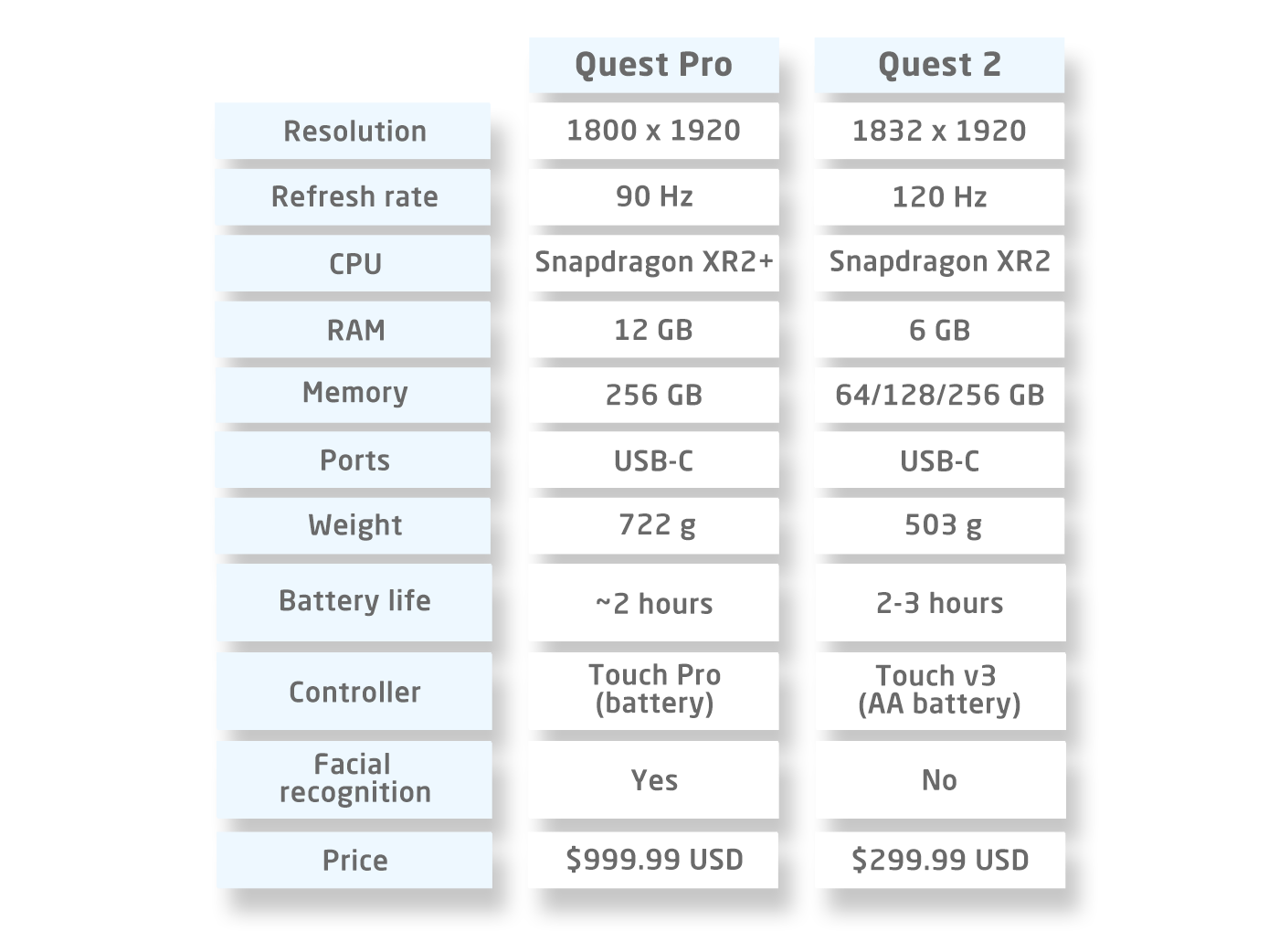
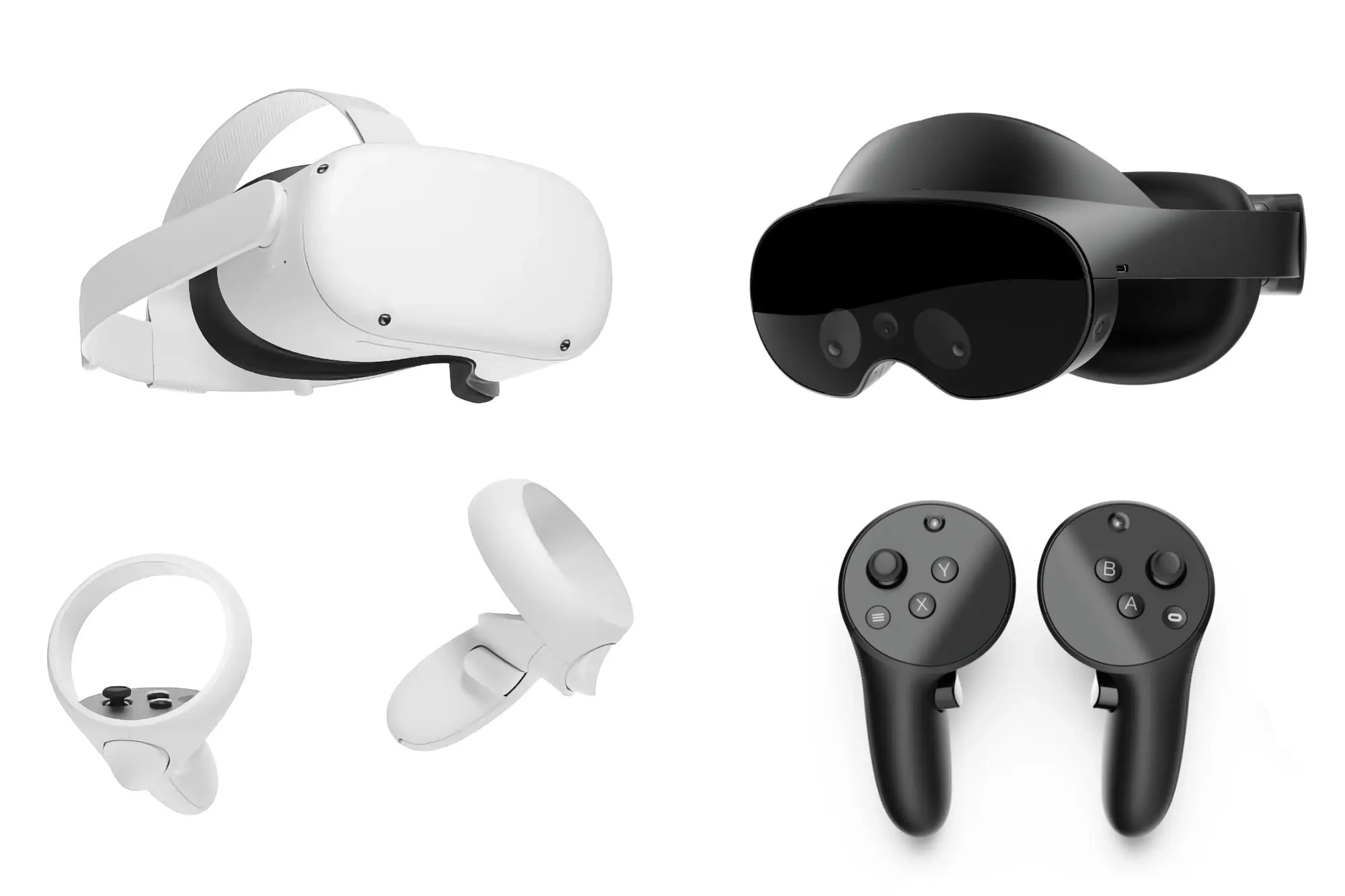 source:https://www.digitaltrends.com/computing/meta-quest-pro-vs-quest-2/
source:https://www.digitaltrends.com/computing/meta-quest-pro-vs-quest-2/
First, let's be clear that the Pro is not a successor to the Quest 2. This was also emphasized by the manufacturer, claiming that they introduced a completely separate department next to that of the Quest 1/2 series, which are intended mostly for games. The Meta Quest Pro is a standalone VR headset that uses inside-out-tracking, like the previous Quests, but with new MR options, more powerful hardware, and completely new controllers.
"Inside-out tracking" is the technology that the Quest Pro and other modern VR headsets use to track movement. This means that sensors and cameras built into the headsets track the movement and position of the head by detecting the movement and displacement of surrounding objects. This is a huge help to the user, as there is no need to install separate hardware in the room that detects and follows the movement of the headset within the room, but rather the glasses can be used after a simple calibration with no additional devices required.
Well, what does it look like?
The biggest difference that we notice at first is that the device is held on our head not with a strap, but with a rigid structure, the support points clearly located around the forehead and the back of the head. Looking at the front of the headset, it’s obvious that Meta did not choose a design that fits the face, rather the headset just rests on our head and hangs down in front of our eyes. You may have a bit of trouble finding the exact fitting as we also had a hard time finding the right angle so that the image would not be distorted and everything could be seen, which was made even more difficult as light was coming in under. After we find the right adjustment for our own head the balance is perfect. The battery is located in the back of the headband (by the adjustment dial), so it doesn't feel like it's pulling our head forward.
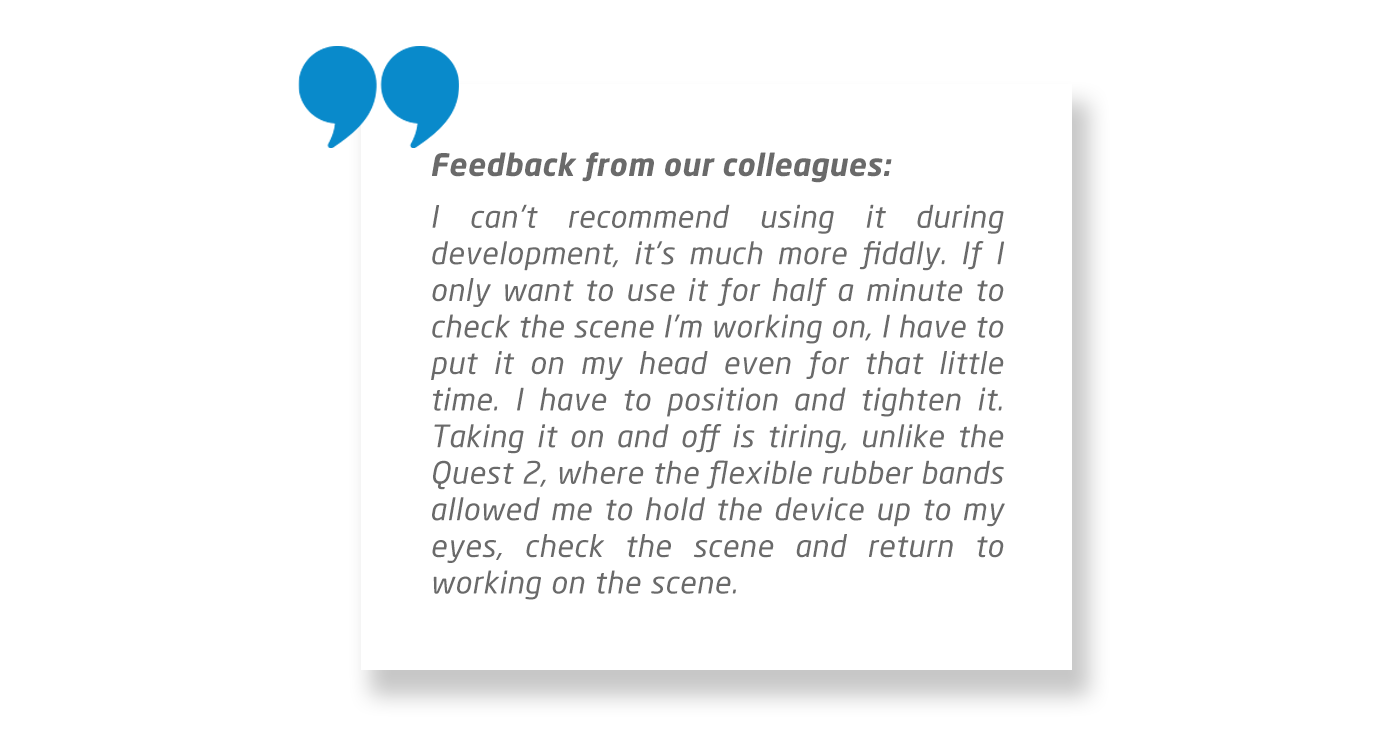
If we want to minimize the amount of light entering the lenses, we can easily put the side light shields on (included in the package), which can be attached in just a few seconds with the help of small, simple magnets. They do not eliminate reflection entirely, but they do improve the situation. Because of the many accessories, the device comes in a rather large box, so it is inconvenient to carry, and because of the rigid strap it cannot be stored or carried in a smaller box or bag. As Quest 2’s strap is made of fabric in that case, this was not a problem.
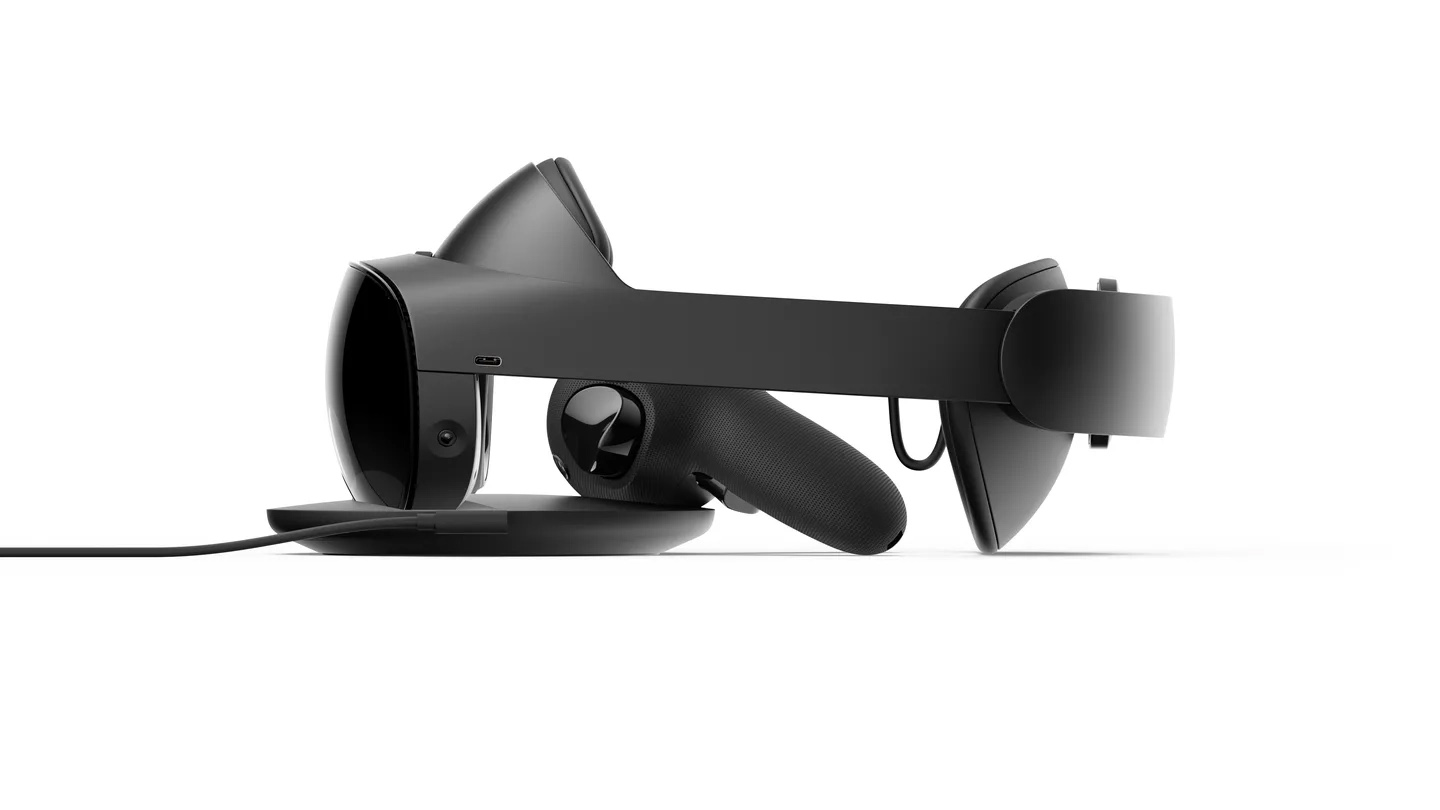 source: https://www.theverge.com/2022/10/11/23397328/meta-quest-pro-vr-headset-price-release-shipping/
source: https://www.theverge.com/2022/10/11/23397328/meta-quest-pro-vr-headset-price-release-shipping/
What about wearing it for an extended period of time?
Despite the balance on the head and the pleasant, soft design, it weighs almost one and a half times more than the Quest 2. The older headset only weighed around 500 grams, but the Pro exceeds 720 grams. Wearing it for about two hours straight puts a slight strain on the neck, so it's good to take a break. While we are resting, we can charge the headset, as its 5000 mAh battery is capable of 2.5 hours of operating time on paper. In case of intensive use, it drained in 2 hours.
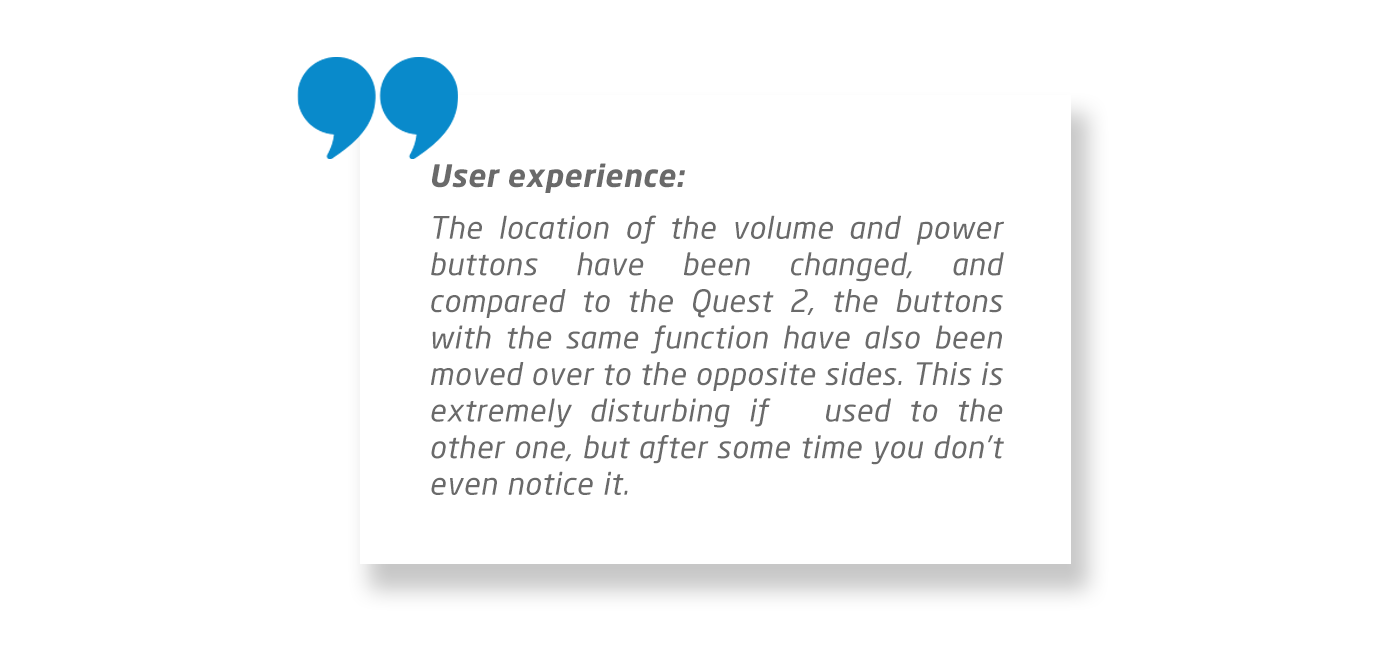
New lenses on the horizon?
That's right, the lens made with the new technology is a huge step forward. These so-called "pancake" lenses are much thinner, so Meta was able to thin down the entire front part. This was necessary, as the hardware (sensors located at the bottom) for facial recognition requires some space. In addition to the narrower design, itprovides a much clearer image compared to fresnel lenses, since the lenses are completely clear. The adjustment for eye distance is still done manually, but at least the situation has improved to the extent that it can be adjusted much more precisely in case of the Pro than having to use the 3 presets found on the Quest 2. If the published leaks turn out to be real, we will be able to adjust the eye distance with a dial for the Quest 3 glasses.
Let’s dive deeper and see what kind of hardware the Pro has!
The headset comes with a powerful Snapdragon XR2+ processor for even greater performance, and also has 12 GB of RAM and 256 GB of storage space. There is no big difference in terms of display resolution, we get 1800 x 1920 pixels per eye (which differs only slightly from the Quest 2's 1832 x 1920 pixel display), and it is worth noting that the device only offers a 90 Hz refresh rate, unlike the Quest 2, which offers 120 Hz. The improved visuals and colors are likely the results of the new lenses, although the color range of the display has been increased by 1.3 times compared to the Quest 2. I would like to point out here that the field-sensing cameras are in color and of much better quality, so in transparent mode we no longer only get a low-resolution black-and-white image, as with previous quest models.
The controller redesign.
These controllers are completely different in both design and principle of operation. They look much cleaner and simpler. The rings with infrared LEDs have disappeared, because Quest Pro switched to camera-based tracking: three cameras track our movements. A big advantage of this is that they provide an exact position even when the controllers are behind us.
It’s a big step forward that the controllers now come with rechargeable batteries instead of disposable ones. This saves us from a few worries. The controllers last about 10 hours with continuous use on one charge. You can also feel this change, as the controllers have become slightly heavier. Some of our colleagues don’t like the heavier design, but personally I am happy about it, this way they want to slip out of my hands less. The controllers also got a better processor, more precisely the powerful Snapdragon 662.
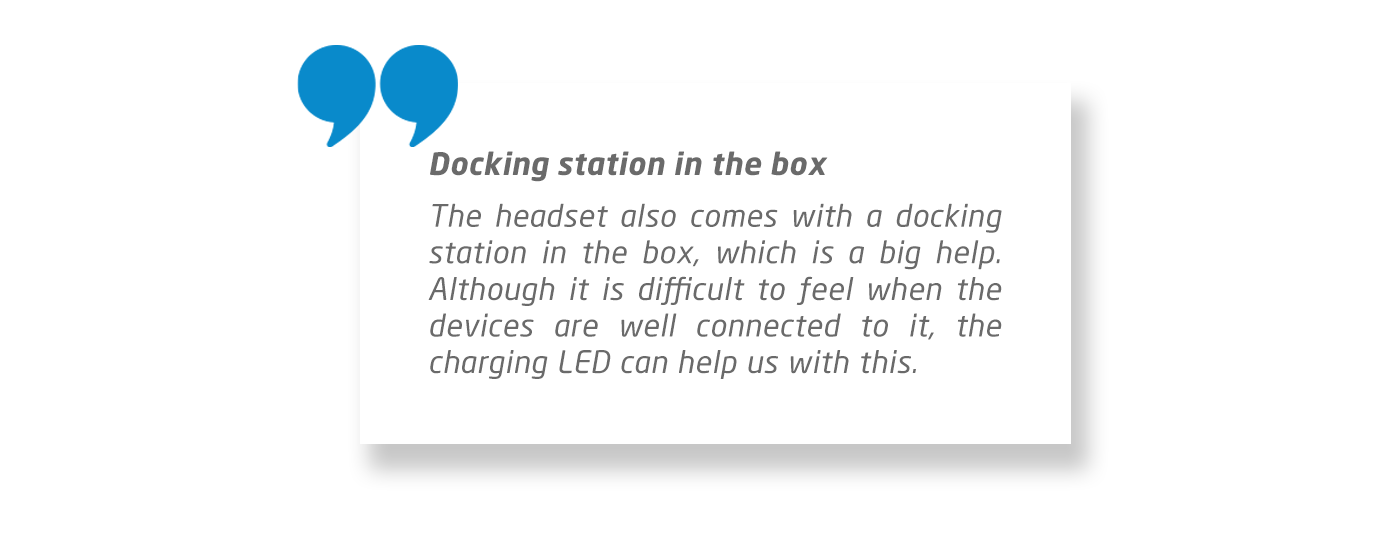
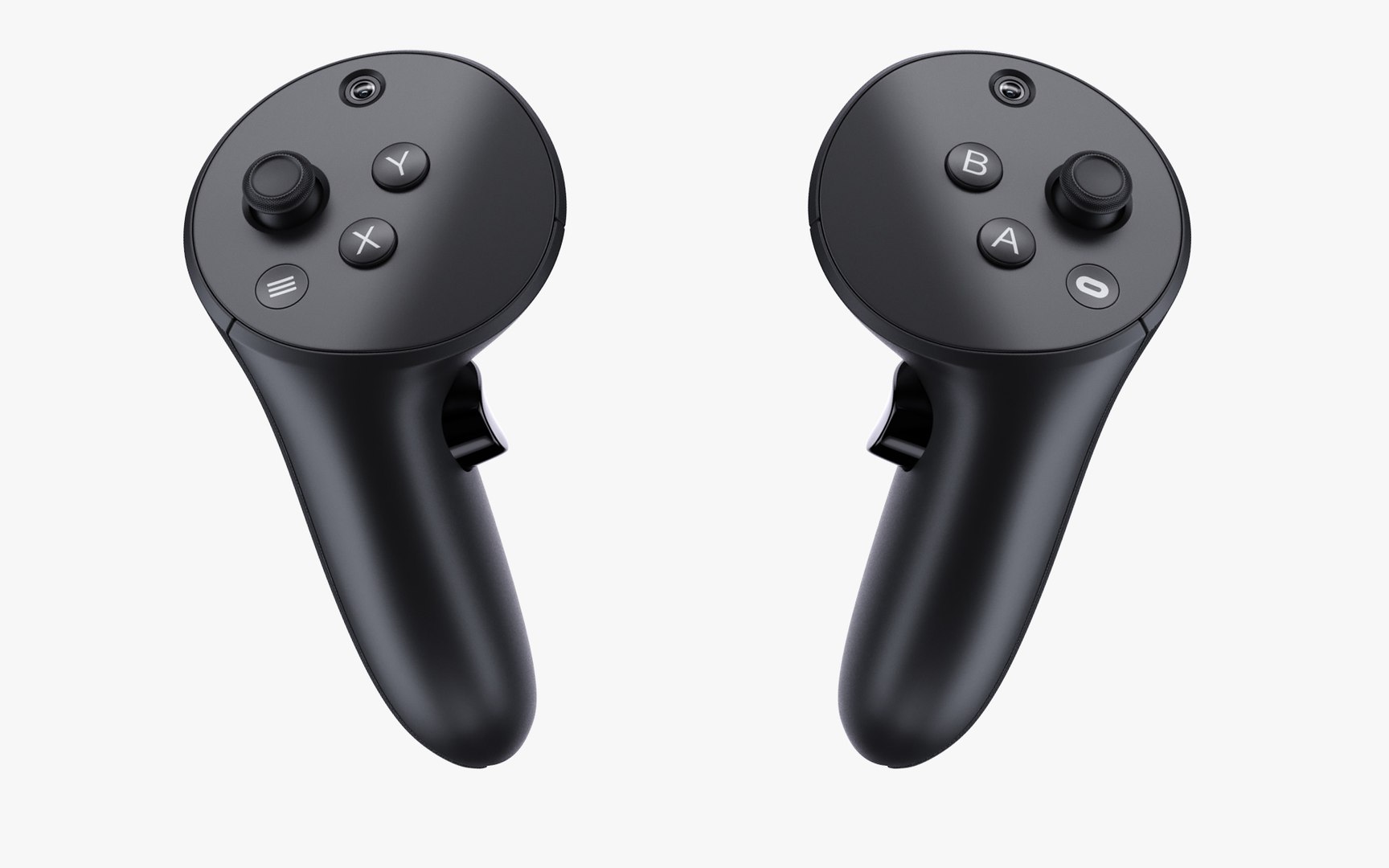 source: https://www.turbosquid.com/3d-models/3d-meta-quest-pro-controllers-model-2020397
source: https://www.turbosquid.com/3d-models/3d-meta-quest-pro-controllers-model-2020397
Summary
The Quest Pro can do more than the Quest 2 indeed, but if we look at the prices, it's not necessarily worth it. Let's get into the numbers. A Quest 2 can be purchased for approximately HUF 200,000 ($299.99 USD) while the price of the Quest Pro is around HUF 700,000 ($999.99 USD). If someone's wallet allows it, then the Pro is the winner, but in terms of value for money, the Quest 2 is still unbeatable.
If someone is thinking about application development, it is probably worth waiting for the release of Quest 3 in the second half of this year. We are very much looking forward to Quest 3 and the Apple Vision Pro, which will be released in 2024.
We hope to be able to test them and write our reviews as soon as possible. ;)
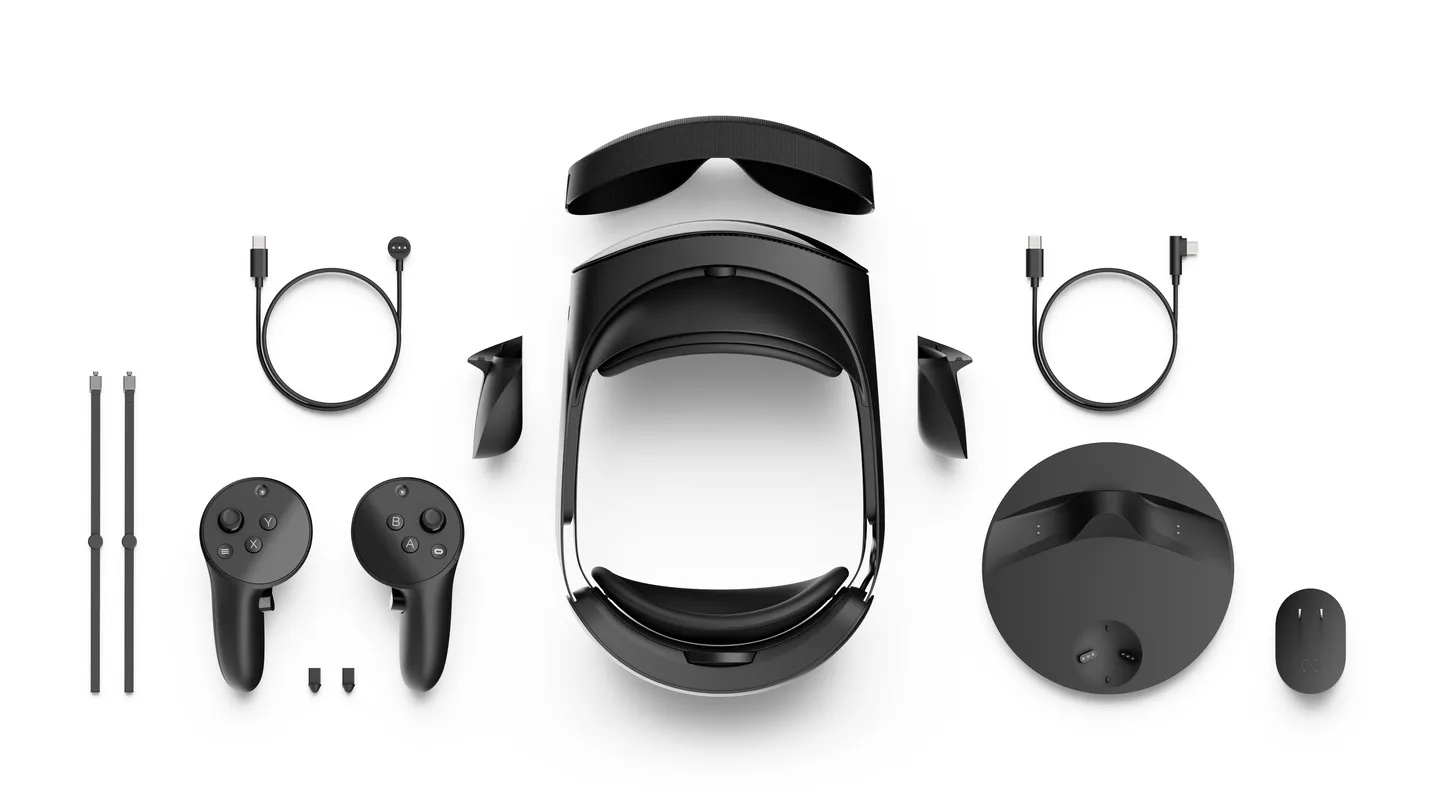 source: https://www.theverge.com/2022/10/11/23397328/meta-quest-pro-vr-headset-price-release-shipping
source: https://www.theverge.com/2022/10/11/23397328/meta-quest-pro-vr-headset-price-release-shipping
Written by V. Mihály, translated by F. Flóra.



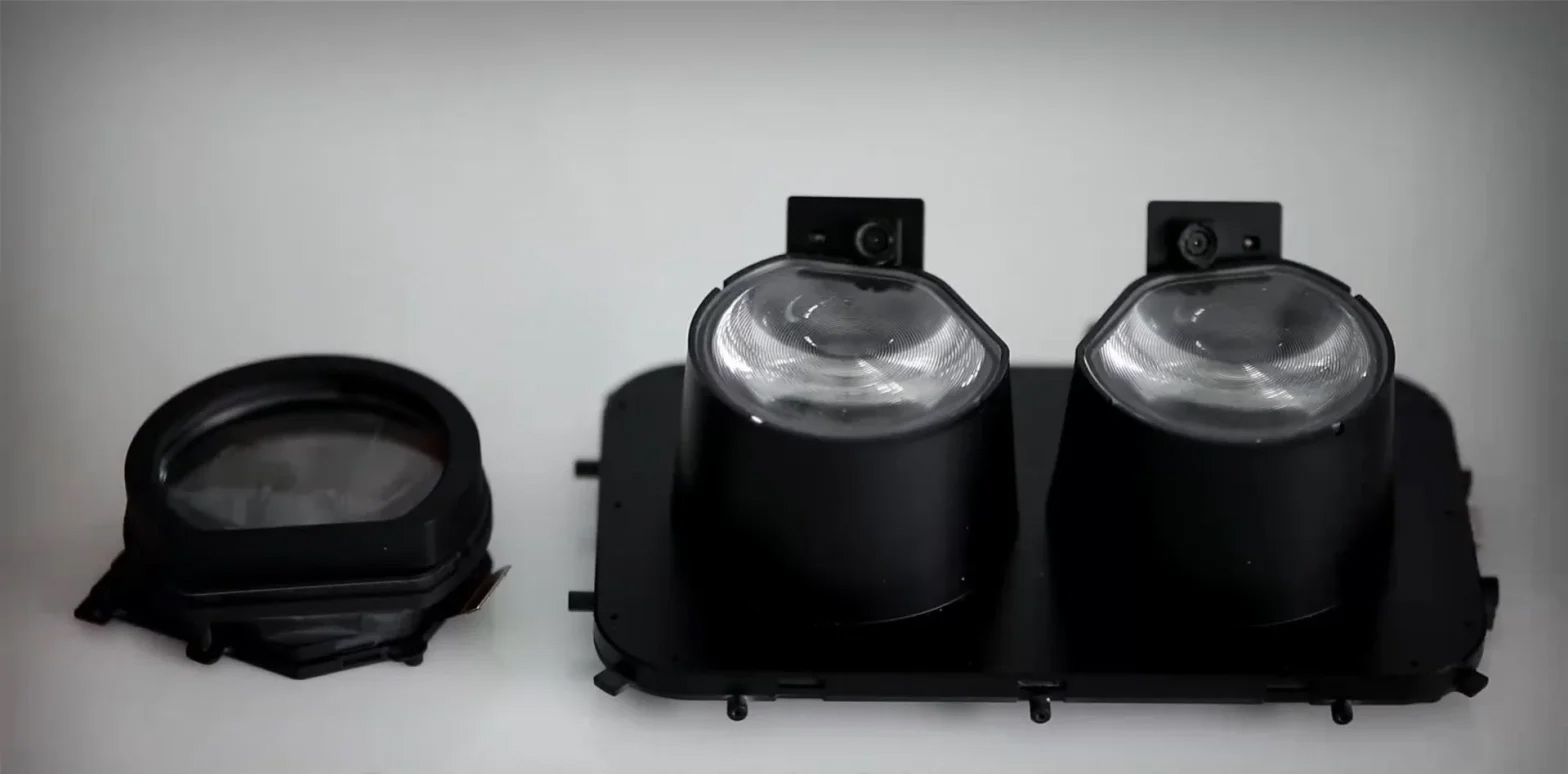 source:
source: 

